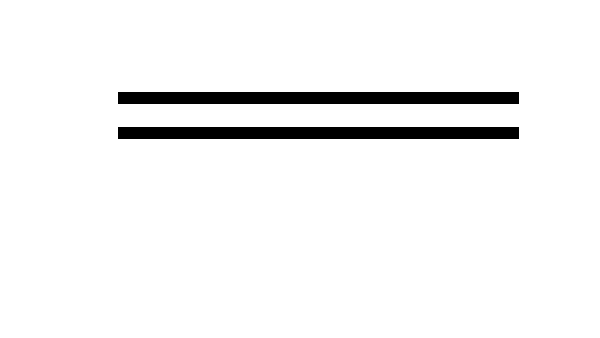Theorem 1 Two lines perpendicular to the same line are parallel.
Theorem 2 Parallel lines are equidistant everywhere.
Theorem 3 Two parallel straight lines are intercepted by a third straight line, and the interior angles are equal.
Proof: Theorem 1
straight linel1⊥l3,l2⊥l3, to prove:l1l2.
Prove by contradiction. As shown in the figure:
Assumptionl1andl2not parallel, straightl3hand over separatelyl1,l2AtA,B, you can passBmake andl1parallel linesl4,AssumeP,Qrespectivelyl2,l4different from the pointB, ( the property theorem that parallel lines are perpendicular to straight lines ) thenl3andl4vertical, with∠ABQ=90∘. andl3andl2vertical, also∠ABP=90∘. This is the straight lineBPandBQdoes not coincide with the contradiction, and therefore assumesl1andl2Non-parallel is not established, so l1l2。
Proof: Theorem 2
straight linel1l2,AB⊥l1,AB⊥l2,CD⊥l1,CD⊥l2, to prove:AB=CD.
Depend onl1l2, (by the theorem of the relationship between parallel lines and area ) , then
S△ABD=S△BDC
And ( the formula for the area of the sine of the angle between the two sides of the triangle )
S△ABD=12AB⋅BD⋅sin90∘=12AB⋅BD
S△BDC=12BD⋅CD⋅sin90∘=12BD⋅CD
therebyAB=CD
Proof: Theorem 3
straight linel1l2, while the straight linel3hand over separatelyl1,l2AtA,B, Prove that the interior angles are equal.
Not fortifiedl3andl1,l2not vertical. PassA,Bdol1,l2vertical lines, respectivelyl2,l1AtP,Q,butPA⊥PB,then
S△BAPS△ABQ=S△PABS△APQ=PA⋅PBPA⋅QA=PBQA=PB⋅ABQA⋅AB
According to the inverse proportion theorem of common angle ,∠PBAand∠BAQequal or complementary, and both are acute angles, helping∠PBA=∠BAQ, that is, the interior angles are equal.
Note From this conclusion, it can be immediately deduced that two parallel lines are intercepted by a third straight line, the same angle is equal, and the same side interior angles are complementary.
Replenish:
- By the parallel line and area relation theorem ,S△ABQ=S△APQ
- From the formula of the sine area of the angle between the two sides of the triangle , we getS△PAB=12PA⋅PB⋅sin∠APB=12PA⋅PB⋅sin90∘=12PA⋅PB, similarly

